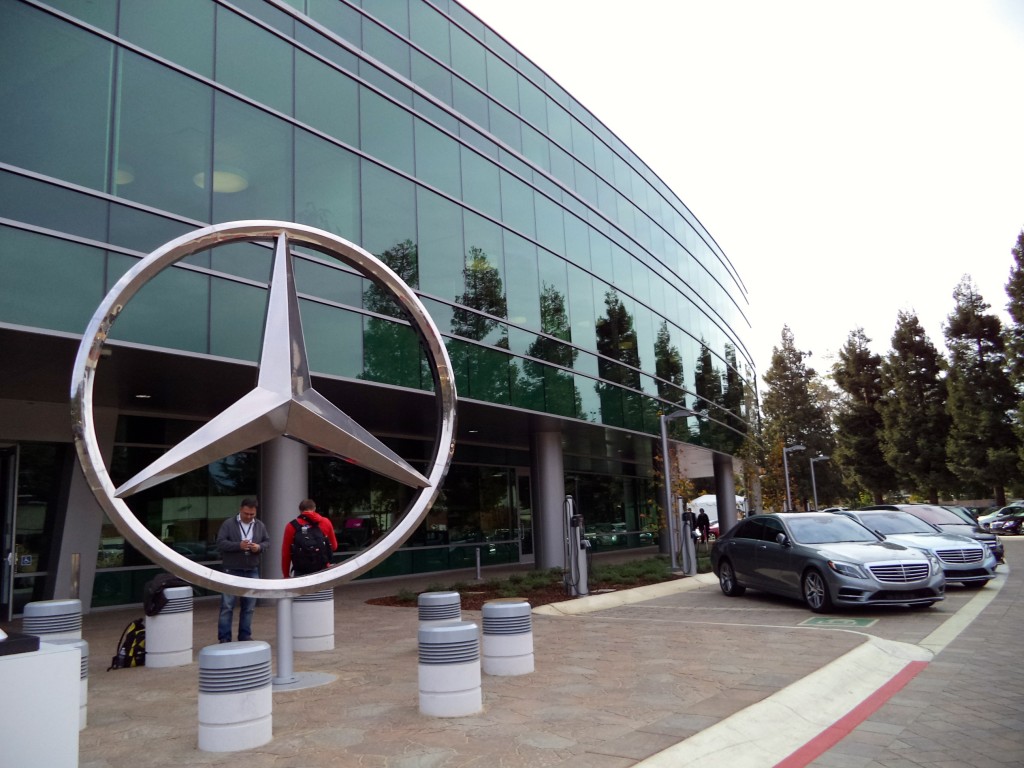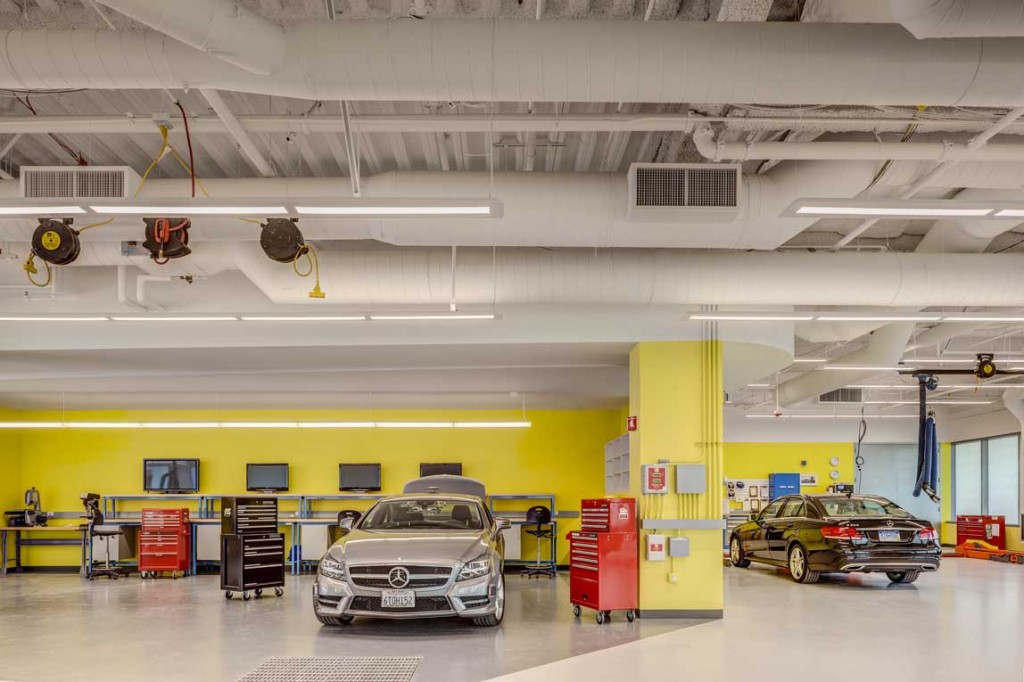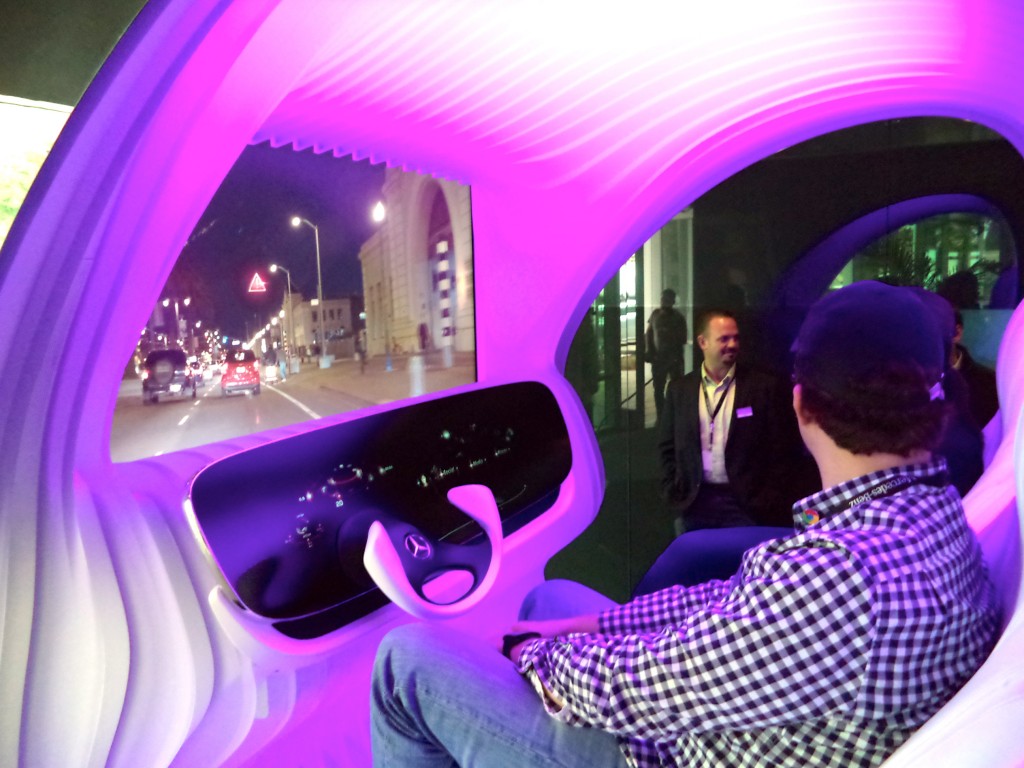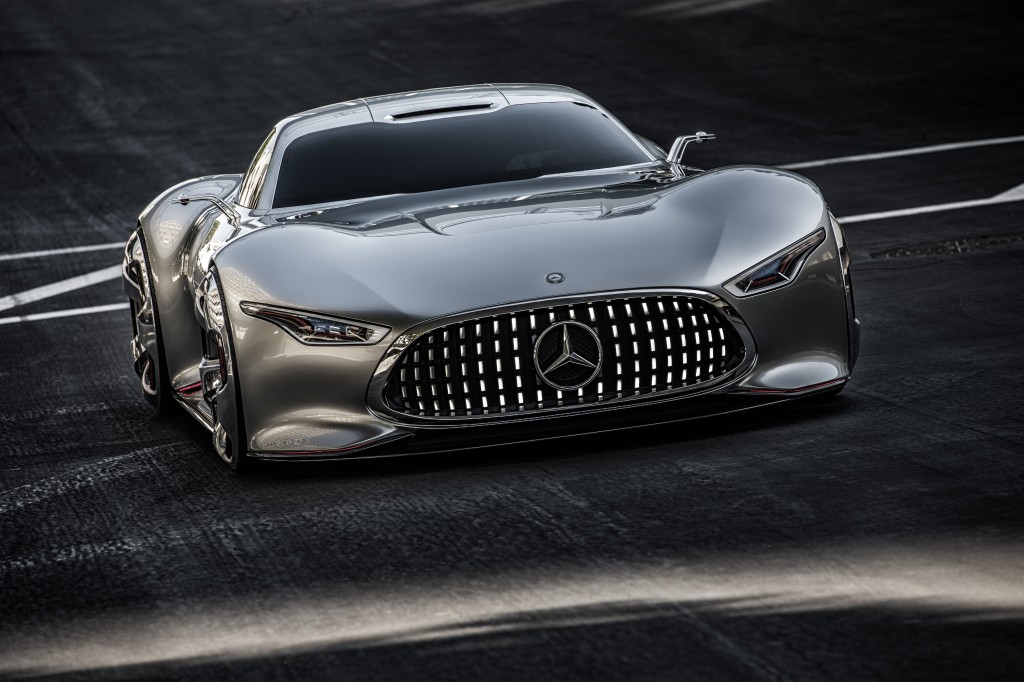Like every other automaker on the planet, Mercedes-Benz is in an R&D arms race. Stricter safety and environmental laws, changing demographics in the Western world, hyper-growth everywhere else, and increased industry competition means the rapid development of new automotive technologies is more critical than ever before. The consolidation of Mercedes-Benz’s previously far-flung American R&D operations under one roof here in Sunnyvale, Calif., is in direct response to these new challenges, but it’s just a part of an overall R&D expansion plan known as Mercedes-Benz 2020.
Officially, Group Research and Mercedes-Benz Cars Development employs about 13,000 people in 22 faculties in 10 countries around the world. And while the staff of 300 at the new Mercedes-Benz Research & Design North America (MBRDNA) offices seems relatively small in number, their to-do list is quite long and far-reaching, including “green mobility” programs (electric vehicles and fuel cell batteries), integrating digital lifestyles into the car, adapting driver systems for North America, creating driver user interfaces and applications, as well as connecting autos to the Internet and the Internet to autos.
“Bringing together our [North American] R&D resources under one roof certainly shortens our product development cycles,” said Herbert Kohler, Mercedes-Benz’s vice president, Group Research & Advanced Engineering here at the MBRDNA official opening just days before the opening of this year’s Los Angeles auto show. “Plus nobody knows what will happen in the future. But we want to be prepared.”
For example, Luca Delgrossi is the director of the MBRDNA’s Driver Assistance Program, a group that’s responsible for advanced driver assistance systems, connected vehicles and autonomous driving. Much of his team’s time is devoted to adapting existing technologies to unique North American traffic conditions, like wider roads, bigger intersections and larger vehicles than what are found in Europe.
Also during our tour of the new facility, Mercedes-Benz presenters repeatedly mentioned their proximity to the plethora of academia, startups and established high-tech companies in the region as a key reason to put down roots here. And of course, this being tree-hugging California, MBRDNA also handles the development of the German automaker’s electric vehicle development, including working with its technology partner Tesla (that’s headquartered in nearby Palo Alto, Calif.) on the battery systems for the existing Smart ForTwo Electric and the forthcoming B-Class EV.
But it’s not all about bits and bytes for MBRDNA. The offices also house a Business Innovation group that has developed such marketing programs as the automaker’s car2go car sharing program and the Mercedes-Benz Driving Academy high-performance driving school. The group is currently piloting a chauffeur service for children called Boost by Mercedes-Benz, targeted at busy Silicon Valley parents who don’t have time to drive their kids to their violin or swimming lessons.
While most of the MBRDNA staff look as if they just walked off the set of the television’s The Big Bang Theory, Mercedes-Benz’s head of design, Gorden Wagener, brought a bit of emotion to the proceedings. Ostensibly on hand to unveil the new Mercedes-Benz AMG Vision Gran Turismo that would end up being the highlight of the German automaker’s AMG-flavoured debuts at this year’s Los Angeles auto show a day later, Wagener also explained how the “virtual concept” showcases the brand’s so-called “sensual purity” design philosophy.
“This visionary car harks back to features from the legendary motor racing history of Mercedes-Benz, and completely reinterprets them as in the case of the sports car radiator of the 300 SL of 1952, for example,” Wagener said.
Created to mark the 15th anniversary of the wildly popular Gran Turismo driving simulator game available only on Sony’s PlayStation game console, like other automakers who participated in the “virtual concept” program, the AMG Vision Gran Turismo exterior designers in Mercedes-Benz’s nearby Carlsbad, California’s design studio were challenged to create a fictional car that had to behave like it was real.
Under the “1,385-kilogram” AMG Vision Gran Turismo’s very long hood is a virtual V8 making a fictional 585 horsepower, mated to a pretend AMG SPEED SHIFT DCT seven-speed automatic transmission. Mercedes-Benz says that the first AMG Vision Gran Turismo super sports car will be available for download when Gran Turismo 6 goes on sale in December.
“And of course you will also find [the AMG Vision Gran Turismo] philosophy in future Mercedes-Benz models again. Not only in the sports cars, but of course also in some special areas, so prepare to be surprised,” Wagener said, hinting that many of the AMG Vision Gran Turismo’s exterior themes will appear on the replacement for the outgoing SLS AMG, which is ending production in mid-2014, and is being sent off with a limited-edition model called the SLS AMG Final Edition, also debuting at this year’s L.A. show. (Visitors at the show can test drive the AMG Vision Gran Turismo virtually in Gran Turismo 6 right next to a 1:1 scale on the Mercedes-Benz booth.)
This article was originally published at Driving.ca









![[del.icio.us]](https://www.straight-six.com/wp-content/plugins/bookmarkify/delicious.png)
![[Digg]](https://www.straight-six.com/wp-content/plugins/bookmarkify/digg.png)
![[Facebook]](https://www.straight-six.com/wp-content/plugins/bookmarkify/facebook.png)
![[Google]](https://www.straight-six.com/wp-content/plugins/bookmarkify/google.png)
![[Reddit]](https://www.straight-six.com/wp-content/plugins/bookmarkify/reddit.png)
![[StumbleUpon]](https://www.straight-six.com/wp-content/plugins/bookmarkify/stumbleupon.png)
![[Twitter]](https://www.straight-six.com/wp-content/plugins/bookmarkify/twitter.png)
![[Email]](https://www.straight-six.com/wp-content/plugins/bookmarkify/email.png)